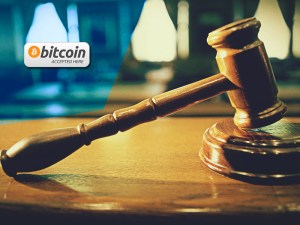News powered by Bitcoinist.net
Article by Drew Cordell
As a continuation of my Blockchain series, I will be covering the potential of the blockchain for the purpose of voting reformation. In order to properly cover sidechains, I need to continue to dig into the knowledge base regarding the technology to learn more about the technology before I write about it. Sidechains are a revolutionary idea for Bitcoin, and it deserves to be reported well. In this part of the series, I intend to explain the importance that blockchain technology can play in how voting is done.
Also read: All About: The Blockchain Part Three
The need for Blockchain based voting
Voting throughout history has shown us that corruption can take root, and many illicit activities can lead to improper reporting and counting of votes. Globally, political corruption to “swing” votes has been far to common. In under-developed countries with Pseudo-democracy, the issue is still very prevalent. Fortunately, blockchain technology has the capability to solve voting corruption, and ensure the integrity of all elections, all at a fraction of the cost of current voting methods. Over the past fifteen years, electronic voting machines that are connected to a network have been a prime target for hackers that have been able to alter votes through infiltration. While this problem has improved, it is still an issue. Recounts, as the result of hacking attacks or incredibly close margins, are not certain. The validity of votes is almost impossible to ensure with the current methods of electronic voting when a recount is to be taken. Blockchain technology has the potential to drastically increase voting integrity, security, and cost.
Transactions on the blockchain, once verified, are all but set in stone. Each voter would have a unique hash associated to their identity, one that only they would have access to. Much like current voting, they would need to register to vote with this specific hash (randomly generated to prevent collisions or double identities). Once registered, the voter would use this hash to send a micro-transaction (backed by a miner fee) to a specific address. Once sent, the voter would not be able to change their vote or send another vote via micro-transaction. This method would work well because of a few things.
Votes could not be altered by a third party.
All votes cast would be publicly available via the block-explorer, meaning that anyone could watch the results of the voting in real time. Identities would be pseudo anonymous. Each voter would only be a transaction on the network, a string of characters that represents their identity. Other people wouldn’t know the identity of each voter. Because the votes would be cast on the blockchain, in order to alter a vote, a hacker would need to change all previous votes in order to change one vote, this is not mathematically or economically feasible.
Power to the People.
With all of the data in their hands, the people would be able to tell easily who one the election or what the results of the voting are. Whether it be an election or passing law, blockchain technology can significantly improve the way voting is done. Everyone would be able to see the exact results of a vote, making any deviation of the decision of the people easy to spot. With this in mind, corruption and vote swinging would become extremely difficult to do without people noticing and taking action.
Reducing costs.
After registration, running a vote would be much cheaper. The expensive hardware used for voting would not be needed, users would only need access to the Bitcoin network in order to vote. Users should even be able to vote from the privacy of their homes once properly registered. Votes would be secure, meaning that there would be no need for a physical location in which to secure votes. Simply put, the cost of voting would decrease significantly if Blockchain technology were to be used.
Conclusion
As Bitcoin continues to expand, the potential for the underlying technology behind it continues to expand in utility. The technology has the capability to decentralize, simplify, increase security, and lower the cost of many industries and processes. I intend to cover the decentralization of certain industries and processes in the next installment of this series. Side-chains will likely be covered in at least two separate articles in the future.
What do you think about the blockchain’s potential to improve voting? Comment below!
Images via Pixabay and Shutterstock

